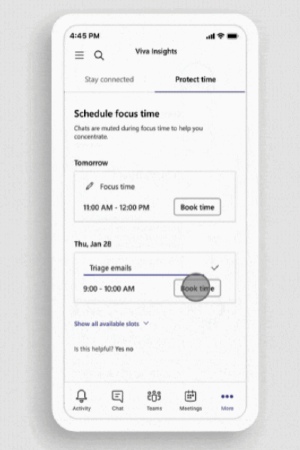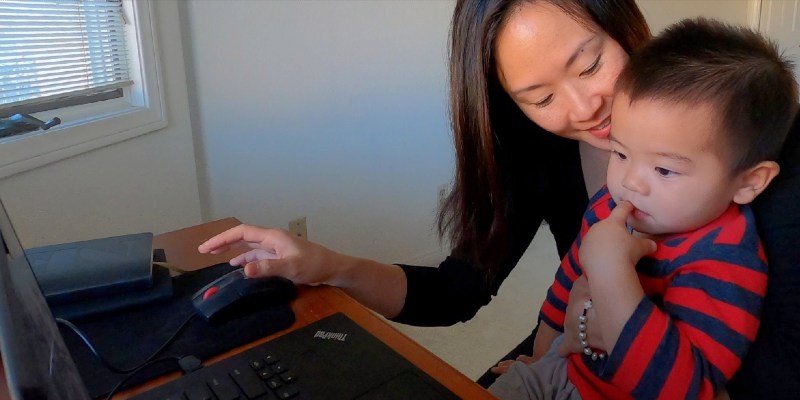Can you make remote work easier and less draining? Here’s how LinkedIn’s remote employees are feeling happier, thanks to some simple new tools and protocols:
By Vanessa Ho, Microsoft
When Jia Xiang Koh started working at home during the pandemic, he found himself working seemingly endless days and weekends. From his dining room table, he responded to emails regardless of whether it was Tuesday morning or Sunday night. His days overflowed with back-to-back meetings, with work and home hours blurring together.
But 11 months into the pandemic, Koh has improved his work-life balance with a few simple steps — all part of recommendations that his employer, LinkedIn, developed from a study mapping employee work habits with how they’re feeling.
“I became happier because I put a lot more boundaries in place and became more deliberate in blocking out focus time,” says Koh, who lives in Singapore.
Like many organizations, LinkedIn has adjusted to a remote environment, but its executives wanted to check in with how employees were doing and how they could help them adapt. So the global social networking company, acquired by Microsoft in 2016, turned to analytics tools in Microsoft Viva. The new employee experience platform combines knowledge, learning, communications and insights to help people and organizations thrive.
Microsoft Viva Insights gives employers visibility into work patterns like how many meetings employees are having, how long their workdays are, and how many instant messages they’re sending after hours. All data is aggregated and de-identified by default to protect individual privacy.
Companies can combine those insights with survey data collected with Glint, a LinkedIn platform that helps organizations understand how their people are feeling and improve employee engagement.
“Merging those datasets unleashed some very unique insights about how people are doing, and then actual, tangible behavioral solutions on how to improve their day-to-day work life,” says Rena Yi, LinkedIn senior manager of People Analytics.
More focus & more freedom make remote work easier
The three-month study of nearly 500 LinkedIn employees in the U.S. was transparent and optional. Yi’s team found that the transition to remote work correlated with more meetings and longer workdays, including an increase of more than 50% in after-hours meetings and an approximate 40% rise in after-hours instant messages.
It also found that happier employees generally had fewer meetings, less after-hours work, and more blocks of uninterrupted “focus hours.”
The data is helping LinkedIn understand employees through four “personas”— engaged, balanced, detached and overworked — and connect patterns. For example, engaged and overworked personas had similar work behaviors with little focus time and plenty of after-hours work. Yi’s team is looking at how these personas are shifting over time.

Viva Insights focus time
Yi’s team is also looking at how to infuse the workday with more silence, or time to focus or recharge, and guide individuals to create and honor their ideal “work rhythm” while respecting the rhythms of others.
For Yi, work rhythm means blocking time to spend afternoons with her kids and finishing work at night.
For Koh, respecting rhythm means sending emails that say, “There’s no rush to respond” or “This is not urgent,” when he’s not pressed for time, instead of letting the recipient scramble and guess his intent. “We try not to reach out to others after hours, and we make it known that they don’t have to respond right away,” he says.
For his own wellbeing, he’s now more thoughtful about how many meetings he joins and lists his work hours in an outgoing status message, so people know when to expect a response.
The study is part of LinkedIn’s ingrained culture of wellbeing, which includes company-wide “no meeting days,” mental health days and two week-long shutdowns a year. Employees can also take time off at their discretion.
Data can also help guide the culture. Early research is showing that employees who have the freedom to define their work hours, take breaks and schedule focus time can have a greater sense of wellbeing.
The team is now working to expand its study to all 16,000 of its global employees, with a goal to make remote work easier for all of them.
You can read the full article and see more photos on the Microsoft Features Blog.
See and bookmark the latest news stories about remote work here.





